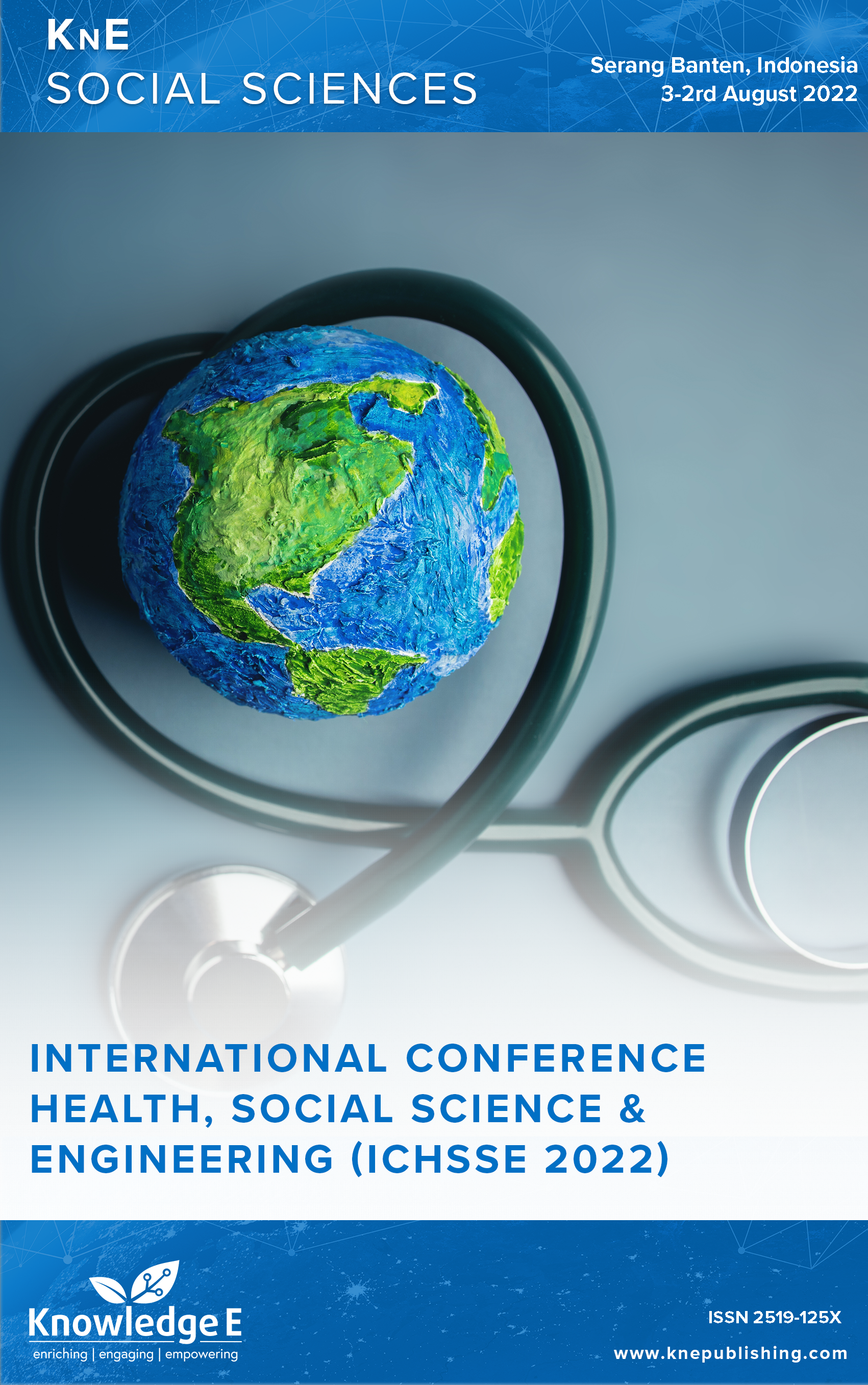Fluoride Contamination and Water Quality Status
DOI:
https://doi.org/10.18502/kss.v8i14.13850Abstract
River fluoride contamination is one of public health problems. This study aims to determine the water quality status and fluoride contamination analyses of Cirarab River, Banten-Indonesia. Water sampling was conducted along the Cirarab River from up to downstream at eight (8) stations from February to June 2016. Water fluoride was analyzed using SPADNS method and STORET method for determining water quality status. Results show that the average water fluoride ranges from 2-2.24 mg/L. The maximum fluoride concentration obtained in station 4 (3 mg/L) was recorded in April 2016. Based on the World Health Organization’s (WHO) maximum acceptable fluoride levels of 1.50 mg/l, the overall results show that the water quality status of the Cirarab River was heavily polluted. In some situations, there was a need for continuous monitoring and warning drinking water management resources to minimize the long term health effects on communities consuming, and also the policies that are necessary to achieve sustainable water quality.
Keywords: fluoride, Cirarab Rivers, water quality
References
[2] Hidayatullah K, Hasmiyanti H, Kurniawidi DW. “Analisis Tingkat Pencemaran Air Sungai Berdasarkan Kadar Fluorida Di Kota Mataram Menggunakan Metode Spektrofotometri UV-Vis.” BIOSAINTROPIS (BIOSCIENCE-TROPIC). 2022;7(2):119– 125. https://doi.org/10.33474/e-jbst.v7i2.482
[3] Hu Y, You M, Liu G, Dong Z. Spatial distribution and potential health risk of fluoride in drinking groundwater sources of Huaibei, Anhui Province. Sci Rep. 2021 Apr;11(1):8371.
[4] Tang J, Dai Y, Wang J, Qu Y, Liu B, Duan Y, et al. Study on environmental factors of fluorine in Chagan Lake catchment, Northeast China. Water. 2021;13(5):629.
[5] Wang T, Shao Z, Yu H, Bah H. Distribution of fluoride in surface water and a health risk assessment in the upper reaches of the Yongding River. J Geogr Sci. 2020;30(6):908–920.
[6] Ijumulana J, Ligate F, Bhattacharya P, Mtalo F, Zhang C. Spatial analysis and GIS mapping of regional hotspots and potential health risk of fluoride concentrations groundwater of northern Tanzania. Sci Total Environ. 2020 Sep;735:139584.
[7] Rahim A, Soeprobowati TR. Water pollution index of Batujai reservoir, Central Lombok regency-Indonesia. J Ecol Eng. 2019;20(3):219–225.
[8] Ndii MZ, Berkanis FR, Tambaru D, Lobo M, Ariyanto, Djahi BS. Optimal control strategy for the effects of hard water consumption on kidney-related diseases. BMC Res Notes. 2020 Apr;13(1):201.
[9] Lal K, Sehgal M, Gupta V, Sharma A, John O, Gummidi B, et al. Assessment of groundwater quality of CKDu affected Uddanam region in Srikakulam district and across Andhra Pradesh, India. Groundw Sustain Dev. 2020;11:100432.
[10] Dasaiah S, Kurakalva RM, Pindi PK. Data on fluoride concentration profile in groundwater of rural habitats in Mahabubnagar district, Telangana, India. Data Brief. 2020 Aug;32:106165.
[11] Namara I, Hartono DM, Latief Y, Moersidik SS. The effect of land use change on the water quality of Cisadane River of the Tangerang City. J Eng Appl Sci (Asian Res Publ Netw). 2020;15(9):2128–2134.
[12] Tyas DS, Soeprobowati TR, Jumari J. Water quality of Gatal Lake, Kotawaringin Lama, Central Kalimantan. J Ecol Eng. 2021;22(3):99–110.
[13] Pant N, Rai SP, Singh R, Kumar S, Saini RK, Purushothaman P, et al. Impact of geology and anthropogenic activities over the water quality with emphasis on fluoride in water scarce Lalitpur district of Bundelkhand region, India. Chemosphere. 2021 Sep;279:130496.
[14] Kabir H, Gupta AK, Tripathy S. Fluoride and human health: Systematic appraisal of sources, exposures, metabolism, and toxicity. Crit Rev Environ Sci Technol. 2020;50(11):1116–1193.
[15] Aravinthasamy P, Karunanidhi D, Subramani T, Srinivasamoorthy K, Anand B. Geochemical evaluation of fluoride contamination in groundwater from Shanmuganadhi River basin, South India: Implication on human health. Environ Geochem Health. 2020 Jul;42(7):1937–1963.
[16] Ferronato N, Torretta V. Waste mismanagement in developing countries: A review of global issues. Int J Environ Res Public Health. 2019 Mar;16(6):1060.

